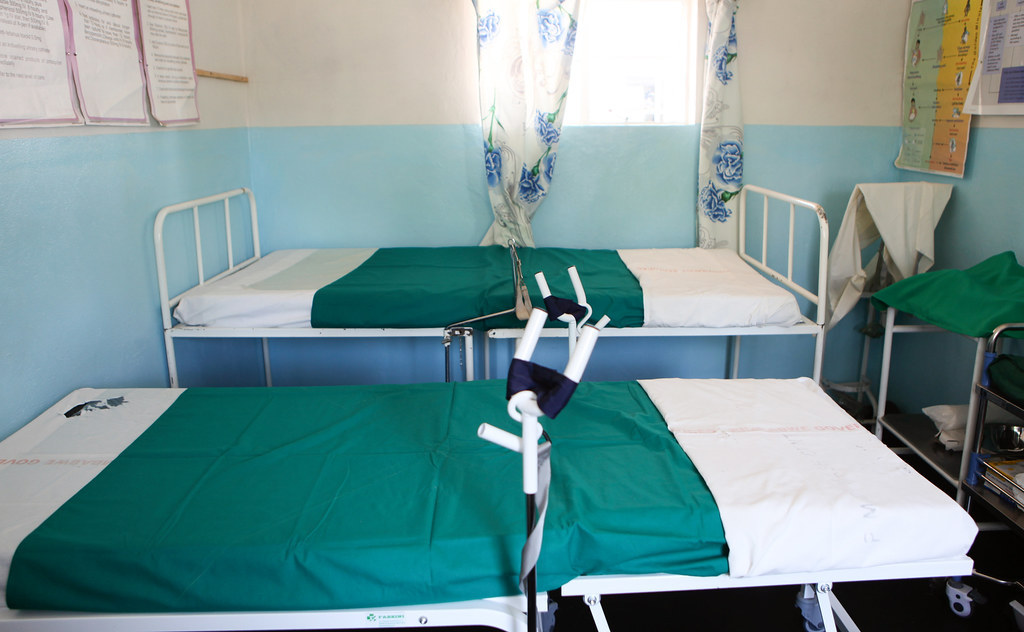Zimbabwe’s high maternal mortality rate could push a lift on abortion restrictions

Harare—Last month, a 22-year-old student at the University of Zimbabwe reportedly died from using a metal coat hanger to induce an abortion. Her lifeless body, faced down with a pool of blood at her feet and blood on her jeans, was seen in what appears to be a classroom setting in footage circulated on YouTube.
Zimbabwe restricts legal abortion to circumstances of rape, incest, fetal impairment, or to save the woman’s life; in instances of rape, courts must determine that intercourse was unlawful. Legal, administrative, and cultural barriers further impede a woman’s access to a safe, legal procedure. Consequently, women and teens resort to unsafe “backstreet” abortions.
But it is horror stories like this one that have prompted a shift in conversation around the country’s prevailing Termination of Pregnancy Act of 1977, which enshrines the near-total ban on abortion.
Even with one of the lowest abortion rates in sub-Saharan Africa, nearly all abortions in Zimbabwe are clandestine: Marie Stopes International, a global family planning organization and safe abortion service provider, estimates more than 70,000 unsafe abortion procedures are performed in the country each year. And with the country’s astronomically high rate of maternal mortality—estimated at 651 per 100,000 live births, one of the highest maternal mortality ratios in the world—Zimbabwe could now be considering legalizing abortion to address this public health crisis.
“It’s no good news that an estimated 3,000 women die every year giving birth,” said Dr. Bernard Madzima of the Zimbabwe Ministry of Health and Child Care. At a quarterly meeting last held in October—convened between parliamentarians from health and justice, primary and secondary educators, legal committees, and women’s rights groups to discuss liberalizing the law—Dr. Madzima said that unsafe abortions were a major contributor to that figure and presented a considerable roadblock to reducing maternal deaths. “We have to note that a fifth of the total maternal deaths are unsafe abortions. Surely, that is too huge a figure to ignore,” he said.
And the figures, it appears, are climbing: while the global trend over the past 25 years has seen a significant reduction in maternal mortality rates—in an effort to meet Millennium Development Goal (MDG) 5 to improve maternal health—Zimbabwe has experienced the exact opposite trend, observing instead a steady increase in maternal mortality.
What’s more, Zimbabwe has consistently failed to allocate adequate funds toward health care that would enable the reduction of maternal deaths, with only nine percent of the national budget dedicated to the health sector in 2019. Plagued by drought, severe food insecurity, and its worst economic crisis in a decade, the situation does not look likely to improve anytime soon.
“Health experts insist that it is much cheaper to offer a safe abortion service in the first place,” Talent Jumo, founder and director of Katswe Sistahood—a feminist organization advocating for full decriminalization of abortion and one of the groups present at the meeting—told Women Under Siege. “If abortion is legalized, the bulk of the blood, medicines, and health personnel allocated for patients who are survivors of botched backyard abortion services will be channeled into other areas.”
Women’s rights groups, like Katswe Sistahood, argue that, 42 years after the Act was passed, knowledge about the basis upon which abortion is permissible in Zimbabwe is not widely known or shared. “Scores of women and girls have no awareness that they can access safe abortion services legally,” Jumo told Women Under Siege. “Full liberalization of the law [would] ensure the removal of doubt and mixed messaging.”
Even if women are aware and exercise their right to access a legal abortion, they still face considerable administrative hurdles: a lack of urgency is built into the approval process, like the requirement to obtain approval via certificate by a magistrate and two medical doctors, from two government hospitals, before the procedure can be granted. In 2017, a woman from Chegutu, in central Zimbabwe, was raped and still forced to carry her pregnancy to term because her certificate was issued outside the medically-permitted time frame for the procedure to be performed.
To make matters worse, doctors in public hospitals have been on strike for nearly three months over poor wages and work conditions, making it impossible for anyone to manage getting approval from two doctors at this time; that is, unless they have access to private health services, which are often beyond the reach of many ordinary citizens.
Perhaps what remains as the most formidable obstacle to legalizing abortion is stigma. Abortion remains highly stigmatized not just in Zimbabwe but in many other African countries as well: an estimated 93 percent of women of reproductive age in Africa live in countries with restrictive abortion laws, with ten out of 54 African countries prohibiting abortion under any circumstances, according to the U.S.-based Guttmacher Institute.
Zimbabweans are traditionally conservative, and debates on abortion have often been dictated by cultural norms and religion. Rejoice Timire, executive director of Zimbabwe’s Disabled Women Support Organization, which works to make the existing Act more accommodating to women with disabilities, personally contends with her work and her religion. “For me when it comes to this issue I always battle with my religion,” Timire told Women Under Siege. “In Christianity, abortion is murder; it’s sin. [With] abortion, you are killing an unborn child.” Even so, Timire said, the reality of the current crisis cannot be ignored. “We’re stuck with so many maternal deaths as a country. We should be able to prevent these like in other countries. Let the women and girls decide on whether or not they want to keep the child. One should be able to do this without fear and with culture out of the way.”
More articles by Category: Disability, Girls, Health, International, WMC Loreen Arbus Journalism Program
More articles by Tag: Abortion, Maternal health



























